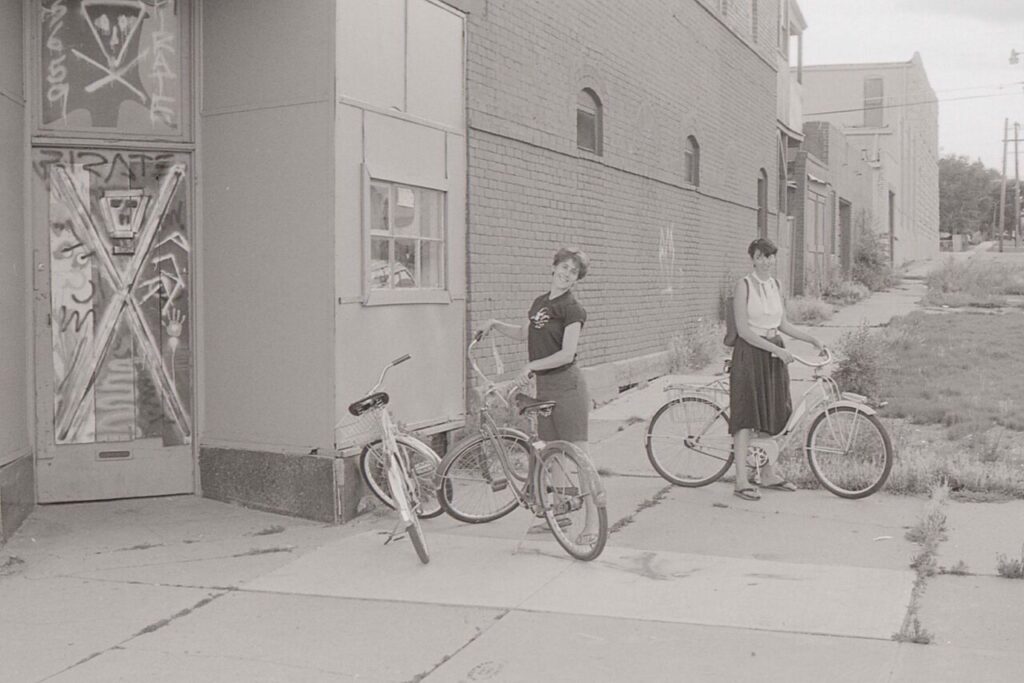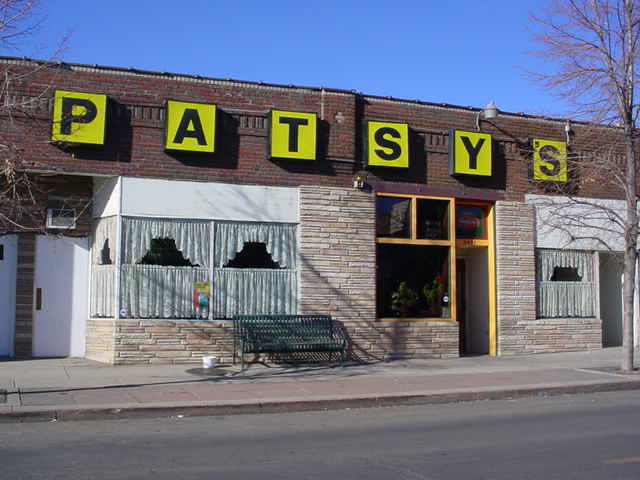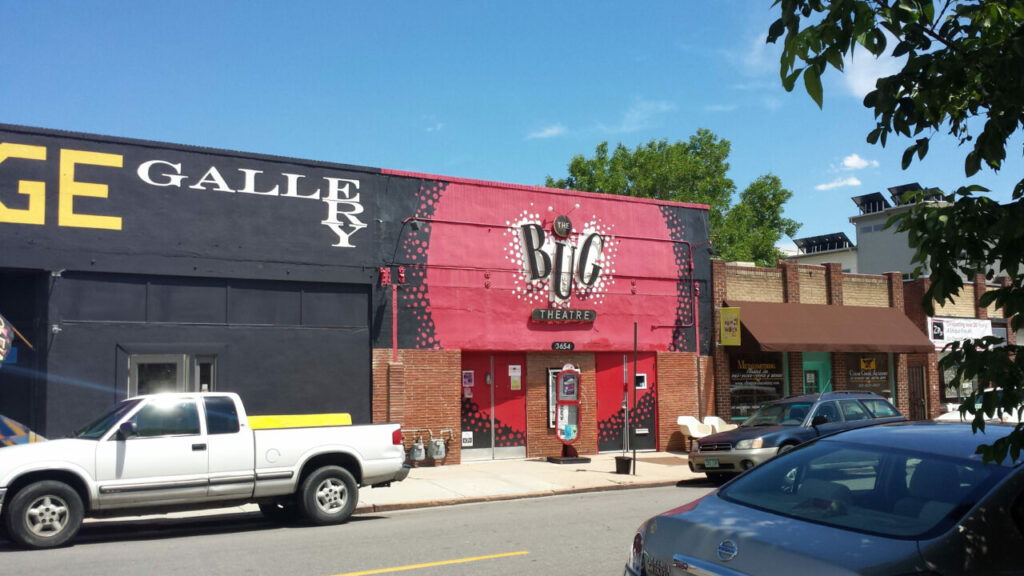By Rebecca A. Hunt
Feb. 14, 2024. This column has been corrected to reflect the date and details around Pirate gallery’s move to Navajo, and to clarify that “The Telephone” was an operetta and not a play. The columnist thanks Chandler Romeo for providing corrected information.
Back in 1985, when Geoff and Rebecca Hunt moved to Denver, they wanted to explore the city’s cultural offerings. At that time many private galleries showed and sold the work of mainstream artists. But a different model was developing that allowed new artists to work collaboratively, exhibit and sell together.
On Broadway, where the Westword newspaper now has its offices, up-and-coming locals showed their work.
Navajo Street, between West 36th and West 37th, became an incubator for groups of avant-garde artists who created new communal spaces that allowed them to push the boundaries of artistic expression in all media.
On virtually any Friday night there were openings on Navajo. At 3659 Navajo were Pirate and Next. Edge anchored the southeast corner at 3658 Navajo. It had been the SeCheverell and Moore Drug Store, then a dry cleaner’s shop. Down the block from Edge was the Bug Theatre, a silversmith school and Zip 37. All of these buildings had housed local businesses before the artists moved in.
The 36th to 37th block of Navajo had once been the core of an immigrant district that was primarily Italian, but had included other ethnic groups as well. At 3659 Navajo had been Russian-Jewish immigrant Kadish Levin’s Dry Goods store. A sign painted on the south wall said “dry goods, shoes and hardware.”

Reed Weimer moved to 3659 Navajo in the summer of 1982. His new wife, Chandler Romeo, joined him the next year. They were so taken with the possibilities of the street that they bought the building. Their ownership was the catalyst for bringing in the artists who created the district. One of the first was Phil Bender. In 1980, Bender organized Pirate as a cooperative gallery, with its first home at Market and 16th in Lower Downtown. They then moved to 15th and Central, and finally they came to Reed and Chandler’s building.
Pirate, a cooperative gallery launched by Phil Bender in 1980, in Lower Downtown, eventually moved to 3659 Navajo in January of 1982, renting from the Levin family. Reed Weimer moved into the apartment on the second floor of the building in late 1982. Reed and his wife Chandler Romeo purchased the building in 1984.
A second co-op, Next, moved in several years later.
After a gallery called Core closed on Navajo, it moved to North Larimer, then to Santa Fe. It now shares space with Edge, Next, Kanon and Flourish Galleria at the 40West Arts Hub in Lakewood.

Down the street from the galleries was Patsy’s, a restaurant that dated from the beginnings of the Italian neighborhood. Started by Mike and Maggie Aiello, it was a pool hall, a bar and, during Prohibition, a soft drink shop. George Aiello changed the name to Patsy’s after he became the latest in his family to run it. It served as a center of the community for 95 years.

Across the street, the Ideal Theatre opened in 1912 at 3654 Navajo. It also was called the Avalon and then, in the 1940s, the Navajo Theatre. In the 1950s it was the World Playhouse, a Helen Bonfils project. They produced “The Telephone,” an operetta by Gian Carlo Menotti. Neighborhood kids called it the Bug because it was full of little creepy crawlies. When Reed and Chandler bought the building in 1992, they renovated it and opened it in 1994, reviving the Bug name. By 1998 it had a resident theatre company and was a rental events space. It has become an arts and theatre hub for North Denver.
The last gallery on the east side of the street was Zip 37. Reed and Chandler bought it from the Ciancio family and it housed the latest generation of new artists. For many years it was the place to purchase the works of unknown artists, often at affordable prices.
After gentrification began and rents and taxes skyrocketed, the galleries began to relocate. Lakewood welcomed many of them to an area just north of Colfax in the vicinity of Casa Bonita. Now called the 40West Arts Hub, it is where you go on a Friday night if you want to see innovative art projects. Patsy’s closed in 2016, removing another iconic business from the now mostly vanished Italian and arts district.
Dr. Rebecca A. Hunt has been a resident of North Denver since 1993. She worked in museums and then taught museum studies and Colorado, Denver, women’s and immigration history at the University of Colorado Denver until she retired in 2020.

Be the first to comment